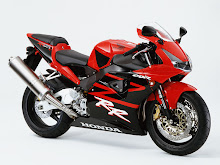
Super Sports Bikes Until the late 1960s motorcycles came in three basic formats:
Working bikes: Generally below 250 cc (15.3 cu in) and low-powered for commuting and utility travelling.
General bikes: Generally below 500 cc (30.5 cu in) / 650 cc (39.7 cu in) for use as a working bike, but with a higher power output so it could also be used for fun on the weekends.
Touring bikes: Anything above working/general bike sizes and built mainly for touring.
The first company to crack this mold was arguably Vincent Motorcycles. Designed as a gentleman's touring bike, their model's speed was astounding for days when motorways and freeways didn't exist. However, its handling was basic, and its shortcomings became clear when faced by a motorway - girder forks.
In the 1960s two bikes were developed which could be both daily commuter as well as weekend racer. These were the first sport bikes. The first was the BSA Rocket 3/Triumph Trident, closely followed by the Honda CB750K.
The 1971
Kawasaki Z1, however, with its 900 cc (54.9 cu in) DOHC engine finally started the era of the modern sport bike. The Z1 sold so well that by the end of that decade the Japanese manufacturers were all building competing machines similar to the Z1 with its DOHC inline-4 engine configuration. The resulting "bike war" among the Japanese manufacturers and required investment in modern engine manufacturing contributed to the demise of the flagging British motorcycle industry. Entry-level Entry-level sport bikes are designed to introduce motorcyclists to the sport bike design. They are relatively inexpensive, lightweight, and durable. There are minimal to no fairings installed to cut down on cost and maintenance if the motorcycle is dropped. Although capable of more power, the engines are usually detuned for longevity and durability. Entry level sport bikes can usually accommodate riders of all heights and weights. Examples include the Suzuki GS500, Honda CB500 and Kawasaki Ninja 500R/250R.


No comments:
Post a Comment